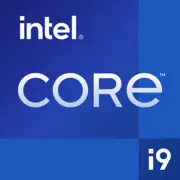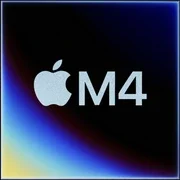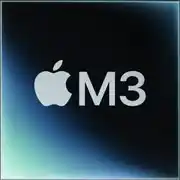Intel Core i9-12900H

Intel Core i9-12900H: The Power of Alder Lake in Laptops — Review and Recommendations for 2025
(March 2025)
Introduction: Why is the i9-12900H Still Relevant?
Even three years after its release, the Intel Core i9-12900H remains a popular choice for high-performance laptops. Its hybrid architecture, high clock speeds, and support for modern standards like DDR5/PCIe 5.0 allow it to compete with products released in 2024-2025. In this article, we will explore who this CPU is suited for, how it performs in gaming and productivity, and what to pay attention to when purchasing a device with it in 2025.
1. Architecture and Process Technology: A Hybrid Approach and Technological Advantages
Hybrid Cores: P-Cores and E-Cores
Alder Lake is Intel's first generation featuring a hybrid architecture that combines Performance-cores (P-cores) and Efficient-cores (E-cores). The i9-12900H includes:
- 6 P-cores (12 threads) with a turbo frequency of up to 5.00 GHz.
- 8 E-cores (8 threads) with a base frequency of 1.8 GHz (up to 3.8 GHz in turbo mode).
P-cores handle "heavy" tasks (gaming, rendering), while E-cores optimize power consumption in background processes.
Intel 7 Process Technology
Despite its marketing name, this is a 10nm process with improved transistor density. This technology allows for a reduction in power consumption by 15-20% compared to the previous Tiger Lake generation (10nm SuperFin).
Integrated Graphics Iris Xe
The Intel Iris Xe iGPU (96 EUs) supports:
- 4K/60 FPS in less demanding games (e.g., CS2, Dota 2 on medium settings).
- Hardware acceleration for video encoding (AV1, HEVC).
- Connection of up to four monitors via DisplayPort/HDMI.
For AAA titles (e.g., Cyberpunk 2077), a discrete graphics card (RTX 4060 and above) will be necessary.
2. TDP and Power Consumption: Balancing Power and Heat
The processor's nominal TDP is 45W, but in turbo mode, consumption can reach 115W. This creates two challenges:
1. Thermal Load: Without an effective cooling system (e.g., vapor or liquid cooling), the laptop will throttle.
2. Battery Life: In maximum performance mode, an 80 Wh battery will drain in about 1.5–2 hours.
Power-saving Technologies:
- Intel Dynamic Tuning 2.0: Automatically redistributes load among the cores.
- Speed Shift: Adjusts frequency in real time to minimize latency.
3. Performance: Real-world Scenario Testing
Office and Multitasking
- Chrome with 50+ tabs + Zoom: E-cores load at 30%, P-cores remain available for "burst" tasks.
- Microsoft Office + Adobe PDF: Smooth performance even when used simultaneously.
Creative Tasks
- Premiere Pro (4K video): Renders in 8-10 minutes (compared to 12-15 minutes on the i7-11800H).
- Blender (Cycles): About 20% faster than the AMD Ryzen 9 6900HX.
Gaming
- Turbo Mode: In games like Elden Ring or Hogwarts Legacy, P-cores consistently maintain a frequency of 4.7-4.9 GHz.
- Thermal Threshold: After 30 minutes of gameplay, the temperature reaches 90-95°C, necessitating quality cooling.
Geekbench 6:
- 2415 (Single-Core): Better than the Apple M2 (2300).
- 11169 (Multi-Core): Lags behind the Ryzen 9 7940HS (12800) but surpasses the previous generation of Intel.
4. Usage Scenarios: Who Needs the i9-12900H?
- Gamers: Paired with RTX 4070/4080 for 2K gaming.
- Professionals: Video editing, 3D modeling, ML tasks.
- Students/Freelancers: Multitasking (streaming, programming + browser).
Not Recommended For:
- Users who prioritize battery life (better to opt for the M3 MacBook Air).
- Ultraportables — too high TDP.
5. Battery Life: How Long Will the Battery Last?
- Office Mode (50% brightness): 6-8 hours (with an 80 Wh battery).
- Multimedia (Netflix): 5-6 hours.
- Turbo Mode (gaming/rendering): 1.5-2 hours.
Tip: In Windows settings, select "Power Saver" mode to extend usage time.
6. Comparison with Competitors: AMD, Apple, and Previous Generations of Intel
AMD Ryzen 9 7940HS
- Pros: Better multi-threaded performance (+15%), lower price ($1300–$1800).
- Cons: Weaker in single-threaded tasks (Geekbench 6 SC — 2200).
Apple M3 Pro
- Pros: Up to 18 hours of battery life, cool operating temperatures.
- Cons: Limited compatibility with Windows software.
Intel Core i9-13900H
- Pros: +10% in clock speed, improved AI accelerators.
- Cons: Price premium ($200–$300).
7. Pros and Cons of the i9-12900H
Strengths:
- High single-core performance.
- Support for DDR5-4800 and PCIe 5.0.
- Optimization for Windows 11.
Weaknesses:
- Heating under load.
- Dependence on cooling system.
- Price of laptops ($1500–$2500).
8. Recommendations for Choosing a Laptop
Types of Devices:
- Gaming (ASUS ROG Zephyrus, MSI Raider): Must have RTX 4060+ and at least 3 fans.
- Workstations (Dell XPS 17, Lenovo ThinkPad P1): Emphasis on 4K screen and 32 GB of RAM.
What to Pay Attention To:
1. Cooling: Check reviews for throttling issues.
2. Battery: No less than 80 Wh.
3. Upgrade Options: Slots for SSD and RAM (DDR5 is more expensive than DDR4).
Examples of 2025 Models:
- MSI Stealth 16 (2025): $1999, RTX 4070, 32 GB DDR5.
- Lenovo Legion Pro 7i: $1799, QHD display at 240Hz.
9. Final Verdict: Is it Worth Getting a Laptop with i9-12900H in 2025?
This processor is suitable for those who:
- Are looking for a powerful laptop for gaming or professional tasks.
- Can accept some heating and moderate battery life.
- Do not want to overpay for the latest models (i9-13900H, Ryzen 9 8945HS).
Key Benefits:
- Proven reliability and compatibility.
- Power for any tasks "here and now."
If your budget is limited to $1500–2000, the i9-12900H is an excellent choice. For ultraportability or "marathon" battery life, consider the Apple M3 or AMD Ryzen 7 8840U.
Basic
CPU Specifications
Memory Specifications
GPU Specifications
Miscellaneous
Benchmarks
Compared to Other CPU
Share in social media
Or Link To Us
<a href="https://cputronic.com/en/cpu/intel-core-i9-12900h" target="_blank">Intel Core i9-12900H</a>




